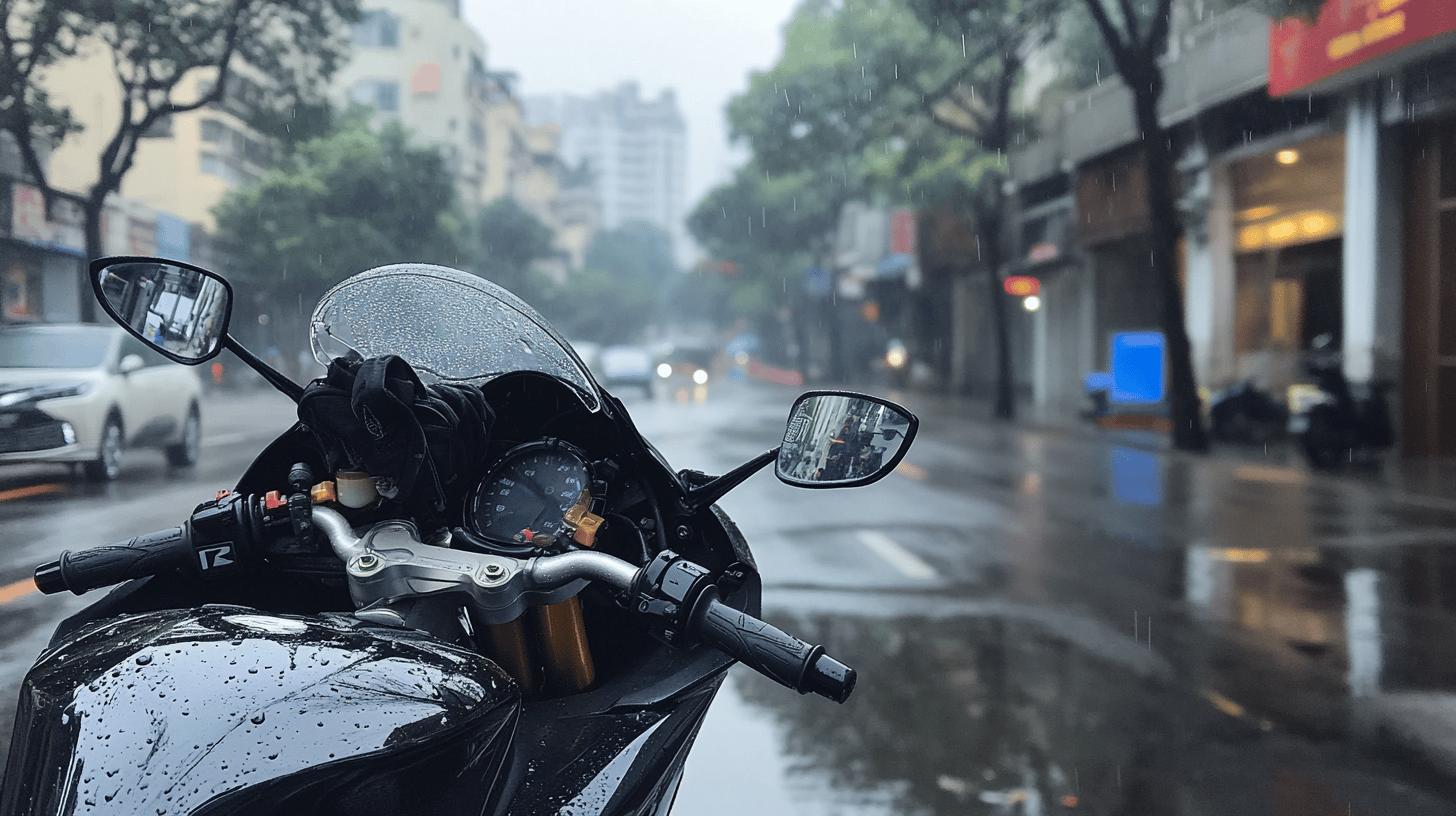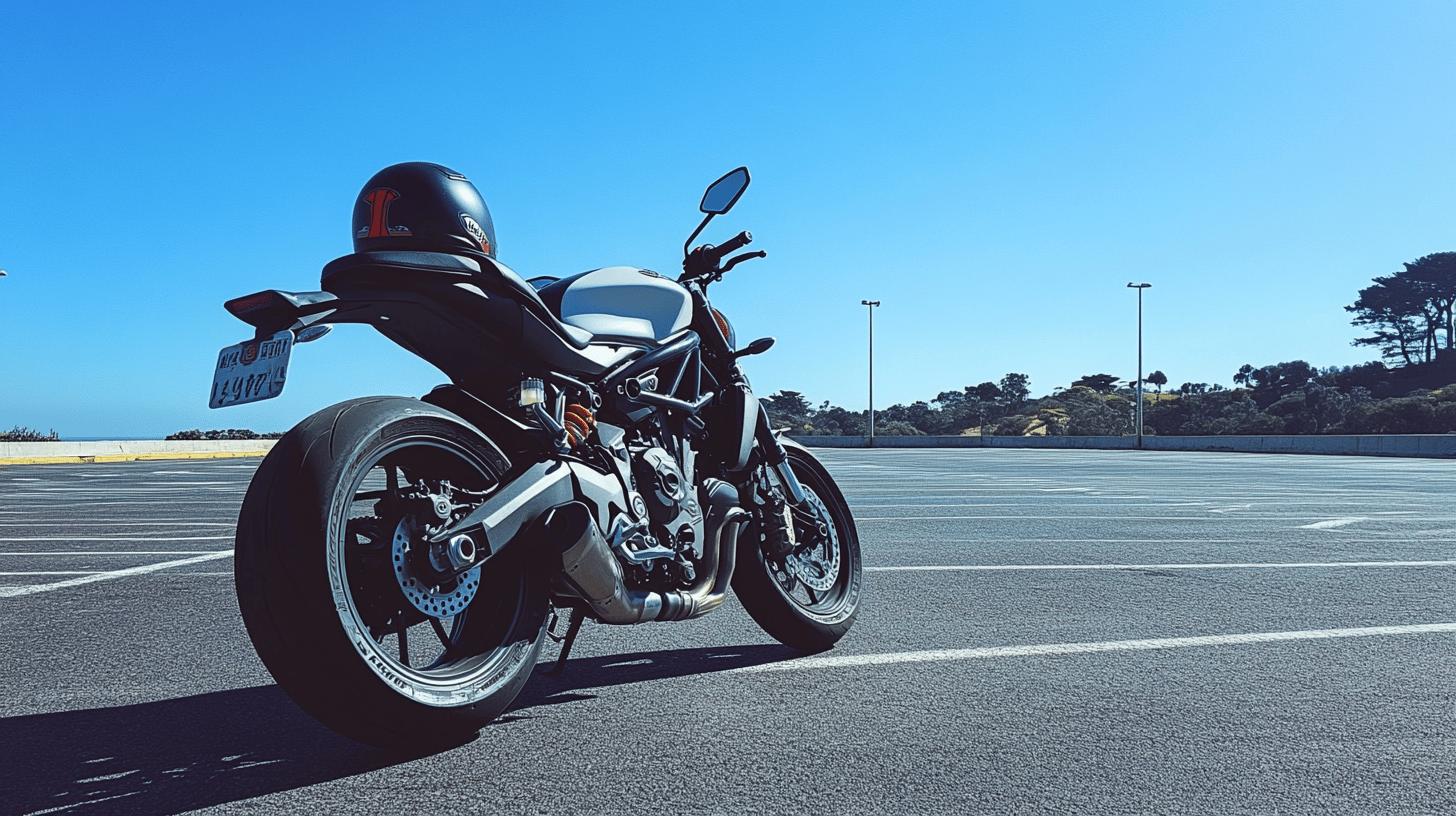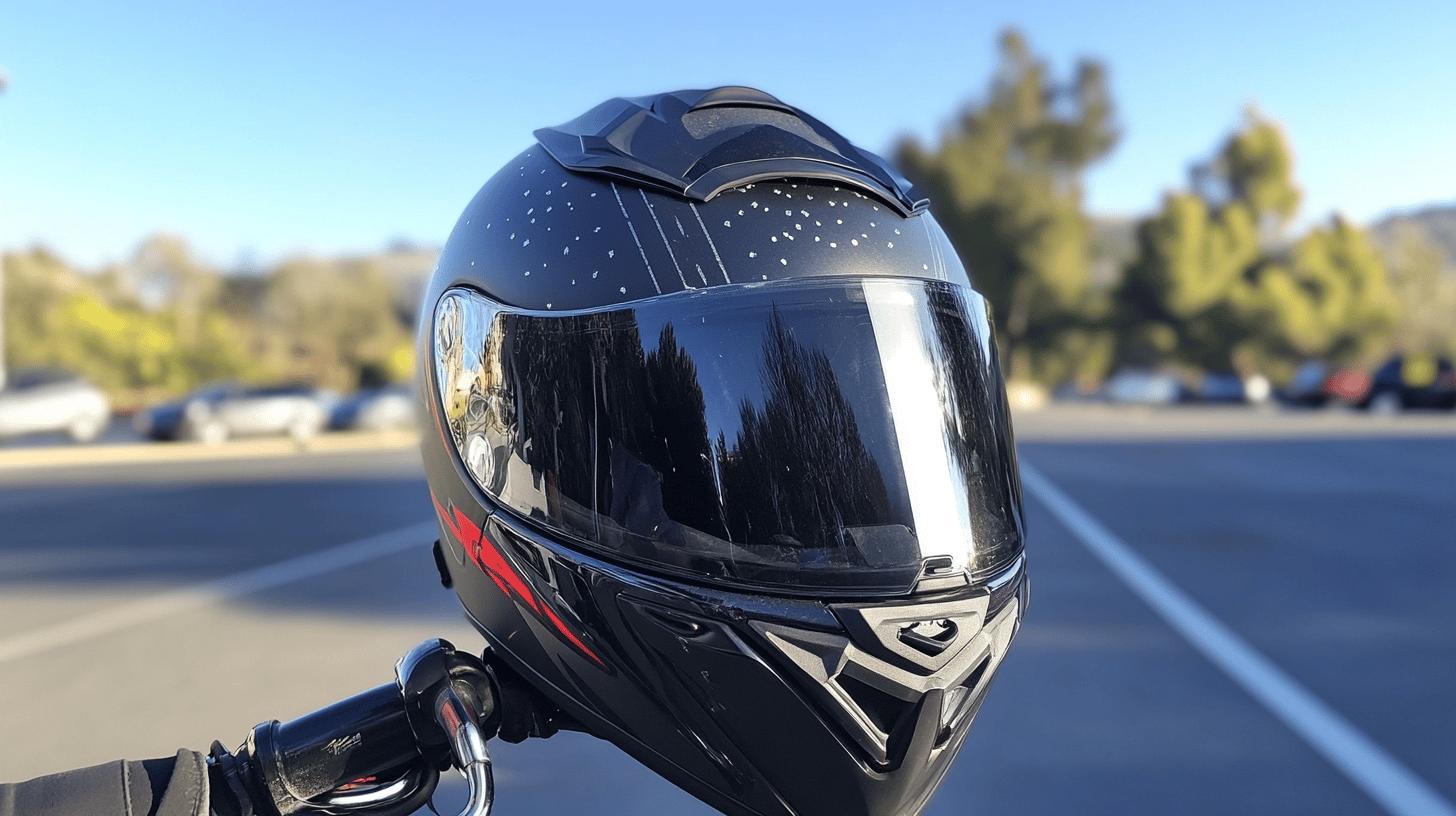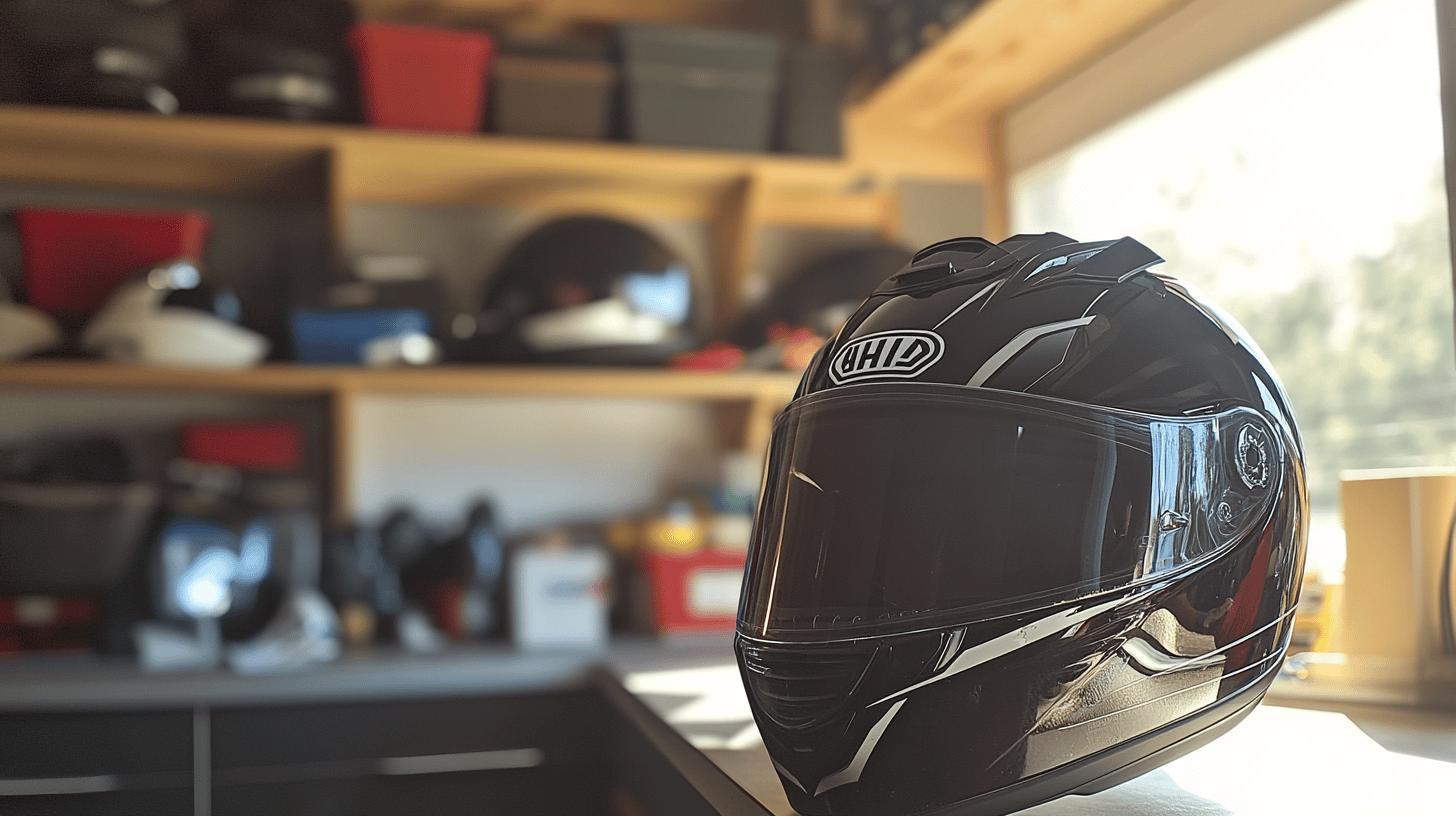Ever felt like your motorcycle adventures end with an awkward juggle of gear at the destination? The helmet holder is a trusty sidekick, turning each pit stop into a breeze rather than a balancing act.
Wondering how to make the most of this underappreciated tool? Integrating a helmet holder can streamline your ride experience, ensuring that your helmet remains secure without any fuss.
Dive into our guide to learn everything from understanding various helmet holder types and styles to choosing the perfect one for your needs and maintaining it for lasting reliability.
Understanding Motorcycle Helmet Holders

Securing a motorcycle helmet is crucial for preventing theft and ensuring it remains undamaged when not in use. Helmet holders serve this essential purpose, providing a secure place to store helmets when the rider is away from the bike. These holders not only deter theft but also protect helmets from potential weather-related damage.
Motorcycle helmet holders are available in various styles and types, each serving distinct needs. Built-in locks are seamlessly integrated into the motorcycle, often found on newer models, and offer a convenient, no-fuss solution. Padlocks, a cost-effective option, can be easily stored within the bike's compartments and used as needed.
Separate lock devices, specifically designed for helmet security, provide a more robust solution and are lightweight, making them easy to carry and use. These devices cater to a wide range of budgets and preferences, offering a balance between security and affordability.
The diversity in helmet holder types allows riders to choose an option that best suits their individual needs and the specific characteristics of their motorcycle. Whether prioritizing integration, portability, or cost-effectiveness, riders have a variety of options to ensure their helmet is securely held in place.
Step-by-Step Guide: Using a Helmet Holder on a Motorcycle

Helmet holders are indispensable for motorcyclists looking to safeguard their helmets when away from their motorcycles. These devices not only prevent theft but also protect helmets from environmental damage. Many modern bikes feature built-in locks, while others require aftermarket solutions. Selecting an appropriate helmet holder depends on both personal preference and motorcycle compatibility.
To effectively use a helmet holder on a motorcycle, follow these steps:
-
Identify the Helmet Holder Type: Determine if your motorcycle has a built-in lock or if you need to use an external device.
-
Position the Helmet: Place the helmet in an accessible location on your motorcycle, such as the handlebars or a designated lock area.
-
Engage the Lock Mechanism: For built-in locks, insert the helmet's D-ring strap into the lock and engage the mechanism. For external devices, loop the lock's cable or chain through the helmet's chin bar or D-rings.
-
Secure the Lock: Ensure the lock is fully engaged and secured, whether using a key or combination lock.
-
Test the Security: Gently tug on the helmet to confirm it is securely attached and the lock is functioning correctly.
-
Store the Key or Combination Safely: Keep the key or remember the combination to retrieve your helmet easily.
Motorcyclists may encounter challenges such as finding a suitable lock location or dealing with incompatible helmet designs. In such cases, using an aftermarket lock device can offer flexibility. If a lock jams, attempting to realign the mechanism or lubricating it with a suitable product may resolve the issue.
Maintaining helmet security is crucial for every ride. A properly secured helmet not only prevents theft but also ensures that the helmet remains in optimal condition, ready to provide protection whenever needed. Regular checks and maintenance of helmet holders contribute to their reliability over time.
Choosing the Right Helmet Lock for Your Needs

Selecting the appropriate helmet lock is essential for protecting your helmet from theft and damage. The right lock not only secures the helmet in place but also provides peace of mind when you are away from your motorcycle.
With various options available, ranging from built-in locks to padlocks and specialized lock devices, it is crucial to understand the benefits each type offers to make an informed decision that aligns with your security needs.
Benefits of different helmet lock types:
-
Built-in Locks: Conveniently integrated into the motorcycle, offering seamless security without the need for additional devices.
-
Padlocks: Cost-effective and easy to store, providing a basic level of theft deterrence that fits well with most helmets.
-
Specialized Lock Devices: Specifically designed for helmet security, these locks are lightweight and often more robust than standard options.
-
Gun Locks: Adaptable for helmet security, these locks can be creatively used to fit various motorcycle segments.
-
Bicycle Chain Locks: Though heavier, they offer strong and reliable security by attaching the helmet to the motorcycle.
When choosing a helmet lock, consider your specific needs and the type of motorcycle you own. Built-in locks are ideal for those who prefer integrated solutions without additional accessories. If affordability is a priority, padlocks serve well.
For more robust security, specialized lock devices or bicycle chain locks might be the better choice. Assessing these options against your riding habits and preferences ensures that the chosen helmet lock provides optimal security and convenience.
Maintenance Tips for Helmet Holders

Regular maintenance of helmet holders is crucial for maintaining their reliability and longevity. Consistent upkeep ensures the device functions correctly, preventing theft and damage to your helmet. Without proper care, even the most robust helmet locks can fail, compromising security and safety.
To keep helmet holders in optimal condition, several specific actions are recommended. Routine cleaning is essential to remove dirt and debris that can accumulate and affect the lock's operation. Inspect the holder frequently for any signs of wear and tear, paying attention to moving parts and mechanisms.
Lubricating the lock components can prevent jamming and ensure smooth operation. Additionally, check for rust or corrosion, particularly in exposed metal areas, and address these issues promptly to avoid weakening the hold. By incorporating these maintenance practices, riders can enhance the performance and reliability of their helmet holders, ensuring they remain a dependable security measure.
Common Helmet Holder Troubleshooting

Lock jamming and installation errors are common issues faced when using helmet holders. These problems not only compromise the security of the helmet but can also lead to inconvenience for the rider. Identifying these issues early is crucial to maintaining the effectiveness of the helmet holder.
To resolve lock jamming, start by inspecting the lock mechanism for dirt and debris, which can obstruct its movement. Cleaning the lock with a suitable lubricant can help restore its function. For installation errors, ensure that the helmet holder is correctly aligned with the motorcycle's frame, as improper alignment can prevent the lock from engaging properly.
Double-check the installation instructions to confirm that all components are fitted as intended. Regular checks and adjustments can prevent these issues from recurring, ensuring that the helmet holder remains a reliable security solution.
Final Words
Securing helmets efficiently is vital for all riders, with various types like built-in locks, padlocks, and separate devices offering distinct benefits. The step-by-step guide on how to use a helmet holder on a motorcycle simplifies the process, enhancing both convenience and security.
Choosing the right helmet lock tailored to individual needs and maintaining it ensures long-term reliability. Addressing common issues helps avoid security gaps. Proper helmet management enhances not only safety but also the overall riding experience.
FAQ
How to use helmet holder on motorcycle reddit?
Many users share tips on motorcycle forums. A typical helmet holder involves placing the helmet on the designated holder and securing it with a lock or strap.
How to use helmet holder on motorcycle Harley Davidson?
Harley Davidson bikes often feature built-in helmet locks. Locate the lock near your seat, loop the helmet's D-ring through it, and secure using the key.
Do motorcycle helmet locks work?
Motorcycle helmet locks provide a practical solution for securing helmets, preventing theft effectively when appropriately installed and used.
How to carry a motorcycle helmet around?
To carry a motorcycle helmet, use a helmet bag or strap to your backpack. Some helmets come with handles or clip-on options for convenience.
How to use a motorcycle helmet strap?
Position the helmet on your head and pull the strap under your chin. Secure by threading through the loop and fasten until snug but comfortable.
Are motorcycle helmet cameras legal?
Helmet camera legality varies by region. Typically, if the camera doesn't alter the helmet's structural integrity, it should be acceptable. Always check local laws.

Brad Mitchell is a seasoned motorcycle enthusiast with over 16 years of riding experience. He’s spent countless hours on the open road, particularly favoring scenic routes aboard his trusted Harley-Davidson. Brad’s laid-back approach to life and riding gives him a unique perspective on motorcycle gear and safety, which he shares through his in-depth reviews and expert advice on ProtectiveGearz.



